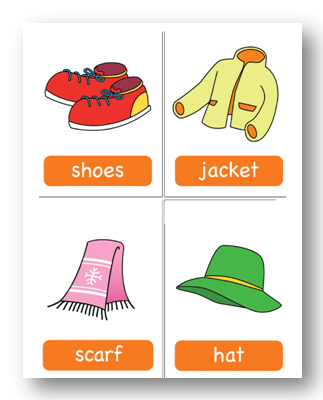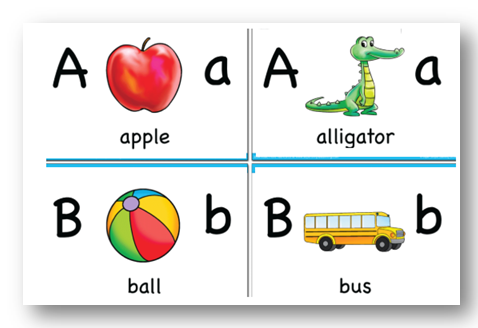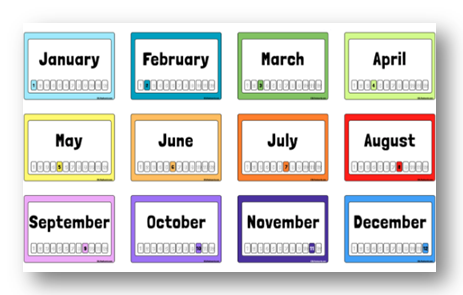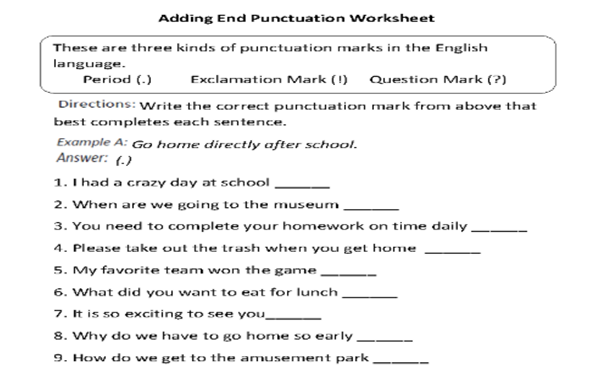English assignment: Lesson Plan for ESL/EFL learners
Question
Task: This task requires you to design a sequence of three lessons which
- is based on a topic relevant to a particular group of ESL/EFL learners that draws upon an integrated approach to second language teaching (e.g. the Teaching-Learning/Curriculum Cycle in Gibbons, 2002). Gibbons, P. (2002) Scaffolding language, scaffolding learning: Teaching second language learners in the mainstream classroom. Portsmouth, NH: Heinemann.The task will consist of the following components:
1. Lesson plans
In this component, you are to design a sequence of three lessons using an integrated
approach to language teaching. Design three lesson plans that describe in detail a set of
steps that would lead to the objectives of the lessons. (Note: The length of time for
you lesson should be consistent with typical lessons delivered within your chosen
teaching context)
The plans should include:
- aims/outcomes/indicators/language level
- the lesson content, teaching sequence; teaching and learning activities
- class participation structure, and evidence of anticipated learning
- an indication of where and what assessment and evaluation procedures might be included across the sequence (formative/summative)
- Reference to the aids and resources to be used (Do not submit copies of resources or aids)
The lesson plan template available in the “Assessment” section in Moodle should be
used.
2. Learning tasks
This component requires you to create materials for two learning tasks for the lessons.
The tasks must be chosen from different lessons:
- one pair work activity (such as information gap, or barrier game activity) that would have students develop vocabulary/grammar knowledge
- one group activity that would encourage collaborative learning The activities should be presented in worksheet format, which should include instructions that will assist learners to complete the activities.
3. Rationale Write a rationale to justify the decisions that you have made and explain how the activities would lead to the identified objectives and address the needs of this group of students. Your essay should conform to the usual conventions for academic essays (see Faculty Handbook for more detail) and should include the following aspects:
- A brief profile of a group of learners. The group might be learners with whom you are currently working, or with whom you intend to work in the near future, or with whom you have worked previously, or they might be hypothetical. Choose a group of learners in which you have an interest: young children, adolescents, adults: in school, workplace, community, tertiary or vocational programs. Include in your profile any student characteristics which need to be taken into account when designing your sequence of lessons
- An outline of any contextual factors which need to be considered either with regard to the immediate context (where the lessons will be delivered) or the target context (where students will be using English they are learning)
- A rationale for the choices that incorporate the readings and research:
- How the lessons were designed
- Why you selected and sequenced certain activities
- How you see the activities would lead to the identified objectives
- How the design of the activities was informed by your views of second language teaching
You are expected to go beyond provision of justification of the adopted approach and demonstrate evidence of greater critique and analysis.
Answer
Introduction
According to the research on English assignment, in Australia, there are an increased number of English language learners across all schools. Children at the beginning of learning English need to be supported by bilingual or English language teachers. Such support needs to be decreased after the learners are supported during their initial stages of learning. Teachers, teaching in EFL have the dual responsibility for the learnings of the student for the purpose of their on-going language development. Students in learning English are often engaged in challenging tasks and bear multiple responsibilities for the development of English language learning across the curriculum. EL learners experience a wide range of issues in the classroom. In the current scope of developing a lesson plan within this English assignment, EFL learners are the focus where an integrated approach is drawn upon second language teaching. There will be three lesson plans drawn in the present context of English assignment for arriving at an integrated approach to teaching the language.
Overview:Herein English assignment, the lesson plan for EAL/D is designed to increase all three interrelated strands of language, literacy, and literature skills. The ACARA developed English as an Additional Language for EFL learners’ learners for Year Foundation will focus on teaching the English curriculum as a second language(Acara, 2014). The focus of the three-consecutive lesson for the foundation year will be language teaching. The length of each lesson will be approximately 20 minutes each.
Class: English Foundation Year
Topic: Language variation and change
Objectives (learning intention specific to the lesson)
Outcomes (how will we know)
Aim of these lessons noted in the English assignment will be to make children understand English as being one of the many languages spoken in Australia amongst different family, classmates, and community (ACELA1426).
Ways in which the English language is used differently at school and at home depending upon relationships between people (ACELA1428).
Prior knowledge: Assumed Nil
Culminating task/assignment: Sharing words
1. Learning tasks
1.1 What is the learning tasks for lesson 2 mentioned in the English assignment?
Give students the flashcards and ask them to give names of these in simple English. Help them in spelling these words in English after they have done in their mother tongue.

Figure 1: Activity 1

Figure 2: Activity 2

Figure 3: Activity 3
2.2 Learning Tasks for lesson 3
Figuring out punctuation in the worksheet in the following section of English assignment:

Rationale
The rationale behind the case scenario of English assignmentis to evaluate and understand the primary principles in relation to the range of methods as well as approaches with regard to the English language learning programs for all age groups is the core concern in this case. In order to do the same, it is important to throw light on the demonstration of understanding of the interrelation between different theories with regard to the second language and acquisition of the same and teaching methodology with regard to the English language. For executing an effective learning program, it is important to possess sufficient knowledge about the development of lesson sequencing and planning for the considered language with regard to all age groups (Bjuland & Mosvold, 2015). In the current case scenario of English assignment, the activities undertaken are very basic and cater to the needs of learners in the foundation years, which are just starting to learn English as their Second Language. The English assignment examines that the core aim for the learners in the foundation year is to develop their basic sense in the Second Language and to attract a considerable amount of interest in the development of language skills. The activities are hence developed to attract the interests of learners and allowing them to develop grasp over the topic. The activities will meet the identified objectives of enabling students to develop text structures in English and be able to insert punctuation marks by making a complete sentence. This will address the needs of the students by way of assisting them in building confidence in Second Language, English. There are considerably diversified learners who are learning English as Second Language, which comprises from an Asian background, Aboriginal and indigenous background, and other non-Australian born students who do not study English as their first language.
Lesson Sequencing can be explained as a systematic procedure that helps in organizing a different number of lesson plans focused on a selected topic that is to be taught consecutively. The purpose behind lesson sequencing illustrated within this English assignment is to be considered as creating an effective and thorough transition between the selected lessons to be taught for meeting the objectives of a particular unit plan and for helping to achieve the ultimate learning outcomes. A lesson plan that is well sequenced, benefits the students as well as the teacher in a more effective learning program. The group of learners with whom currently the work is being undertaken and will be undertaken in near future, lessons are planned to provide knowledge to them regarding English such that they can develop competency in the subject. Learners for this program will mainly consist of young learners, who want to develop English language skills as a part of their competency. The student characteristics will mainly be from the non-Australian born background but will also include children from Aboriginal and Torres Strait people. It is evident in the English assignment that the student main characteristics include an inability to speak in English or understand the language, with capabilities only in their mother tongues. Thus, in designing a lesson plan, adequate steps are undertaken such that they begin to understand English from a cross-cultural competence framework.
Inaccurate organization and the proper sequence of a lesson plan allow a more effective and smoother functioning of the classroom and at the same time reduction can be identified in stress on the teachers. A well-planned lesson includes building the background knowledge of the subject, executing explicit instructions with regard to the lesson program, guided practice, peer practice, and assessment of the content so learned. There are many benefits that can be optimized from the execution of a well-sequenced and properly plant lesson learning program. It is beneficial for the identification of the learning objectives and goals for both the teachers as well as students and therefore it ensures a smoother execution of the program under consideration.
Effective planning to be executed in the classroom can be identified to be a vital part of education and managing student behavior. A proper learning or lesson planning will help the teacher for organising the patients to be taught during a lesson program (Ghanaguru, Nair & Yong, 2017). However in order to build or construct an effective and appropriate lesson or learning plan it is important for the planner to possess the ability to carefully implement the same in order to engage the students in a goal-oriented lesson. There are certain events to be taken into consideration in the present case of English assignmentbefore executing the lesson plan and that includes three phases including before the class during the class and after the class session. Before the class, the teacher is to identify the learning objective and plan the specific activities in relation to the same following the sequence of the lesson by creating a realistic timeline along with a proper closure plan for the same. During the class, the lesson plan so constructed is to be shared with the students for helping them to get more engaged with the same and get on the same track. Lastly, during the after the class phase, the students are to be asked to reflect on the learning outcomes and the teacher should be reflecting on the possible optional methods that could be implemented for making it more effective. In order to avoid any possible negative consequences, that teacher is required to assess all the data related to the subject that is to be taught depending upon the age group of the class and mapped objectives of the learning session (Drost & Levine, 2015). In that case of English assignment, it is to be enumerated, why English has been chosen as the second language, and what outcomes are to be executed from the program therein. It is further to be evaluated in context of this English assignment that how the program will be executed in order to assess the best result and effective execution of the teaching method aligning with the goals and objectives.
There is a different range of effective teaching strategies and pedagogy that can be applied for executing an effective learning session. Pedagogy can be practiced with regard to effective teaching following a theoretical concept. Participatory technology, trust among the participants, innovation, and creativity, sharing ideas, connected community, learner-generated, reflective practice, and peer review can be identified to be attributed to the open pedagogy. For an effective learning situation, there can be identified five standards with regard to an accurate pedagogy including joint productive activity, language development, contextualization, challenging activities, and instructional conversation. In the case of joint productive activity explored in the English assignment, teacher and student relationship, and effectiveness of the same can be followed for enhancement of the learning session. In the case of language development developing language across the learning station or the curriculum is to be followed. In the case of contextualization developing the meaning of words and phrases will be taken into consideration (McKay & Bokhorst-Heng, 2017). In the case of challenging activities teaching complex thinking and application of the same will be followed. In order to accomplish the instructional conversation method of teaching through conducting a conversation among the students will be taken into consideration. In the case of English as a second language to be learned as an important part of the learning station knowledge about the curriculum is to be taken into consideration including gathering knowledge about parts of speech and their functions, punctuations, linguistic terminology, and reading activities (McKay & Bokhorst-Heng, 2017). Fortunately, each part of these areas can be executed for teaching to every group of students. Learning English as a second language will not be restricted to learning grammatical formation but it will be considered to be learned following a practical reading session (Lin, 2017). In that case of English assignment, reflecting on the student's learning outcome will not be enough but the teacher is required to reflect on their own teaching skills. The teacher is required to analyze what could be done for making the learning station more effective. Following the Strategies and procedures, and an accurate and effective learning situation can be planned and synchronized or sequenced.
Contextual factors mentioned in the English assignmentthat needed consideration while designing of English language lesson plans includes understanding that the children possess knowledge in their cultural context only. Some of these children to whom the English language lesson is taught do not have a print of their cultural language available, which makes it further difficult to translate spoken words into written texts. Moreover, these children do not have any home-based or parental support assisting them in the development of English language skills. Thus, the readings developed in the English assignment signifies that these lesson plans were designed taking into consideration some basic aspects also the activities provided for the students were also rudimentary in nature. The sequence of the lesson activity was developed in tune with a content description from the ACARA website that provides the various strands which have to be developed per lesson. Similarly, the activities were developed keeping inconsistency with the lesson plan aims and objectives in mind. The activities will lead to the identified objectives as they will create a sense of awareness regarding the various basic concepts and also concepts in punctuations, which in turn will provide confidence to the children in grasping a new language. The design of the activities was informed by views of second language teaching includes adopting the principles of dialogic teaching, lesson plan designed that provides a collaborative approach between the teacher and second language learner.
Conclusion
In the conclusion section of English assignment it is stated that the lesson plan is developed according to the suitability of student characteristics. The Australian Curriculum describes commitment for all students. In order to cater to this commitment, the AARA develops English as an Additional Language allowing non-Australians to grasp confidence over the subject. The board also makes available several resources for the achievement of English language structures and vocabulary to the learning domain. EAL/D students in particular require some support in the development of English language skills to access the general curriculum in addition to specific language structures as well as vocabulary.
References
Acara. (2014). English as an Additional Language or Dialect Teacher Resource. Annotated Content Descriptions English Foundation to Year 10. English assignmentRetrieved from
Bjuland, R., & Mosvold, R. (2015). Lesson study in teacher education: Learning from a challenging case. Teaching and teacher education, 52, 83-90.
Drost, B. R., & Levine, A. C. (2015). An analysis of strategies for teaching standards-based lesson plan alignment to preservice teachers. Journal of Education, 195(2), 37-47.
Ghanaguru, S., Nair, P., & Yong, C. (2017). TEACHER TRAINERS’BELIEFS IN MICROTEACHING AND LESSON PLANNING IN A TEACHER TRAINING INSTITUTION. The English Teacher, (2), 13.
Lin, L. F. (2017). Impacts of the Problem-Based Learning Pedagogy on English Learners' Reading Comprehension, Strategy Use, and Active Learning Attitudes. Journal of Education and Training Studies, 5(6), 109-125.
McKay, S. L., & Bokhorst-Heng, W. D. (2017). International English in its sociolinguistic contexts: Towards a socially sensitive EIL pedagogy. English assignmentRoutledge.












